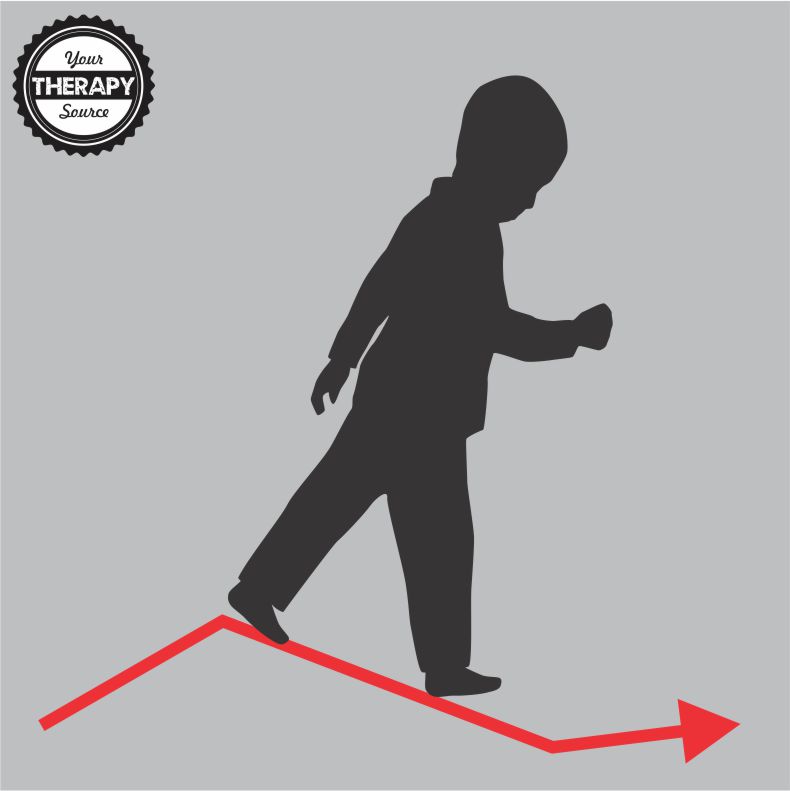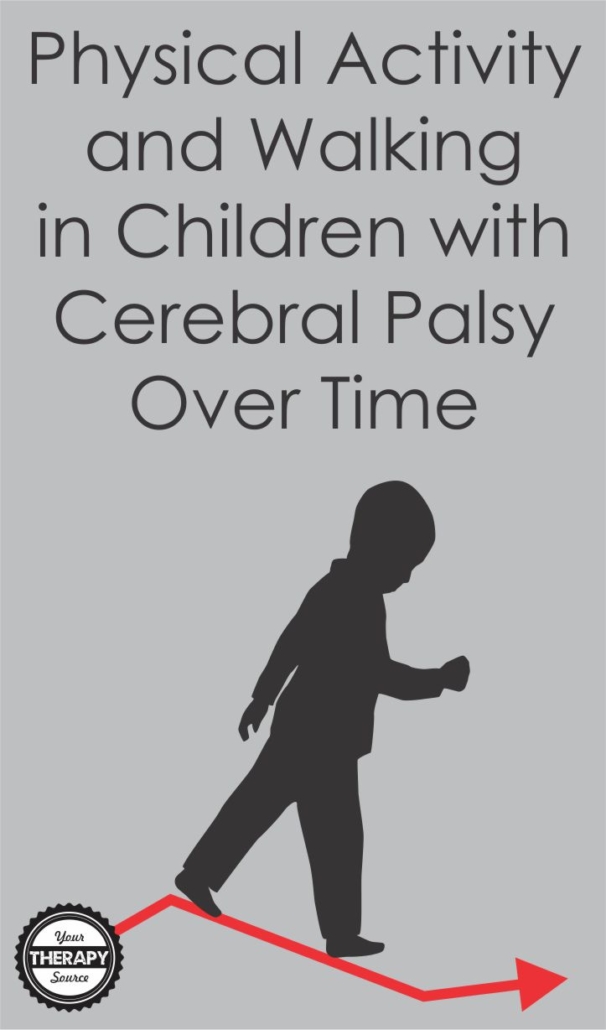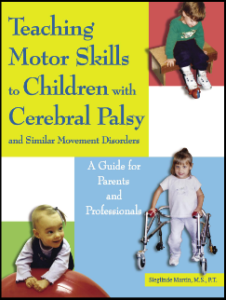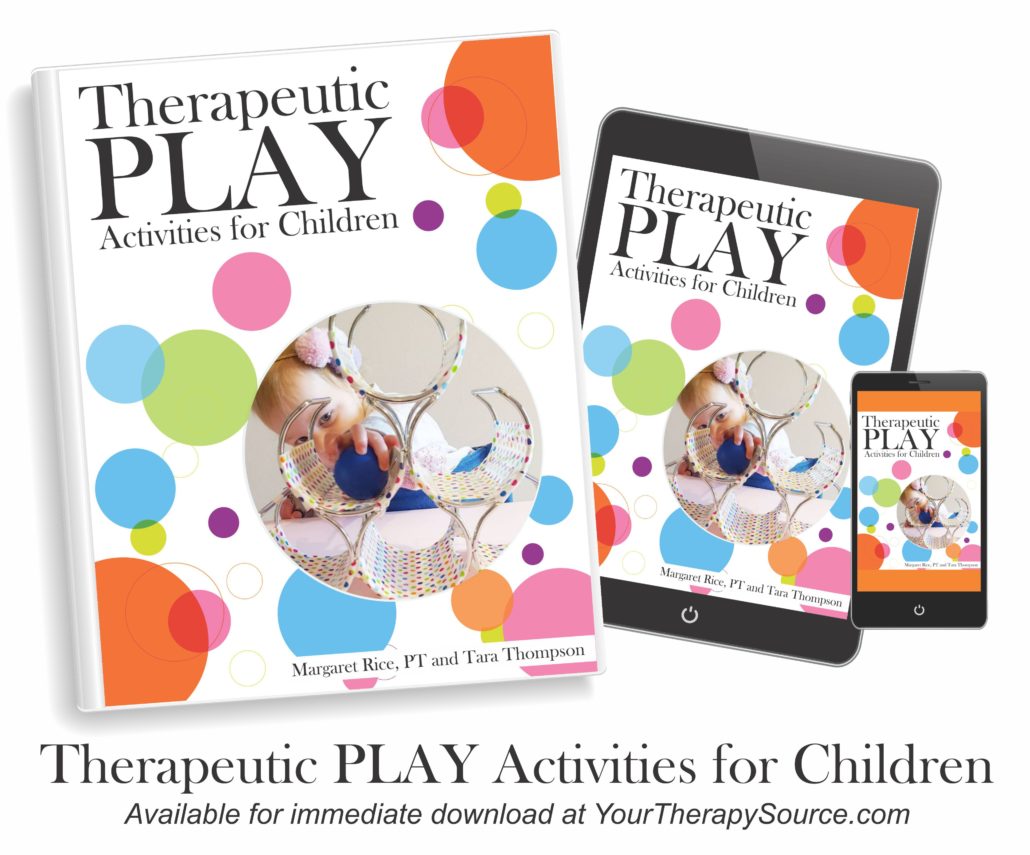Physical Activity and Walking in Children with Cerebral Palsy Over Time

A recent study in Disability and Rehabilitation examined physical activity and walking in children with cerebral palsy over time. The goal of the study was to create developmental trajectories for physical activity and walking performance for children with cerebral palsy.
Methodology
The study included 79 children with cerebral palsy (Gross Motor Functional Classification System – GMFCS levels I–V). The average age of the participants was 7.6 years old. Each participant across GMFCS levels I–V wore an Actigraph to record physical activity. In addition, the children with GMFCS levels I-II also wore a StepWatch to measure walking performance.
Developmental trajectories for average physical activity counts/minute and the number of minutes of moderate to vigorous physical activity were generated for levels I, II, and III/IV/V(combined). Single leg strides/day and average strides faster than 30 strides/min trajectories were generated for GMFCS levels I–II.
Results of the Study on Physical Activity and Walking in Children with Cerebral Palsy Over Time
The results of the study on physical activity and walking in children with cerebral palsy over time indicated the following:
- the children with cerebral palsy did NOT display plateaus in physical activity or walking performance based on functional level.
- the children with cerebral palsy across all levels showed a decrease in the amount and intensity of physical activity from 3.0 to 12 years old.
- GMFCS level I participants demonstrated the steepest decline in the amount and intensity of physical activity from 3.0 to 12 years old.
- children in GMFCS level I decreased slightly in walking performance measures from 3.0 to 12 years old.
- children in GMFCS level II increased slightly in walking performance measures from 3.0 to 12 years old.
Conclusion
The researchers concluded that physical activity and walking performance in children with cerebral palsy varies over time based on functional levels. This information is helpful to guide physical activity and walking interventions for therapists and families.
Additional Research on Physical Activity and Walking in Children with Cerebral Palsy Over Time
Additional research indicated that the development of motor performance continues for years in individuals with cerebral palsy even after gross motor capacity limits are reached.
Daily activities continue to develop for individuals without intellectual disability into their 20s.
Individuals who are severely affected have the least favorable development of motor performance, and those with intellectual disability have the least favorable development of daily activity performance.
Since the research indicated that there is ongoing development of daily activities, routine monitoring of individuals with cerebral palsy for activity limitations should be carried out into adulthood.
References:
Bjornson, K., Fiss, A., Avery, L., Wentz, E., Kerfeld, C., Cicirello, N., & Hanna, S. E. (2018). Longitudinal trajectories of physical activity and walking performance by gross motor function classification system level for children with cerebral palsy. Disability and Rehabilitation, 1-9.
van Gorp, M., Roebroeck, M. E., Tan, S. S., de Groot, V., Gorter, J. W., Smits, D. W., … & PERRIN DECADE Study Group. (2018). Activity Performance Curves of Individuals With Cerebral Palsy. Pediatrics, e20173723.
Teaching Motor Skills to Children with Cerebral Palsy and Similar Movement Disorders: The ELECTRONIC version of Teaching Motor Skills is a must-have reference for all therapists who work with children with cerebral palsy. Whether you are a beginner or experienced therapist you will find the information concise, informative and very helpful to carry out everyday functional tasks including stretching with children with cerebral palsy. The book provides activity suggestions throughout the developmental sequence such as head control, tummy time, sitting, transitions, walking and beyond. There is also great information that reviews additional interventions for children with cerebral palsy such as bracing, surgical and medical management. The author, Sieglinde Martin, is an experienced PT and a mother of a child with cerebral palsy. FIND OUT MORE.
Therapeutic Play Activities for Children digital download includes 100 play activity pages and 12 tip sheets. The play activities encourage the development of fine motor skills, bimanual skills, rolling, crawling, tall kneeling, standing balance and cruising with a strong focus on children with cerebral palsy. FIND OUT MORE INFORMATION.

More information:
Educating Caregivers Improves Self Care and Mobility Skills in Children with Cerebral Palsy
Development of Motor Performance Continues for Years in Individuals with Cerebral Palsy
Examining Gross Motor Progress in Children with Cerebral Palsy




